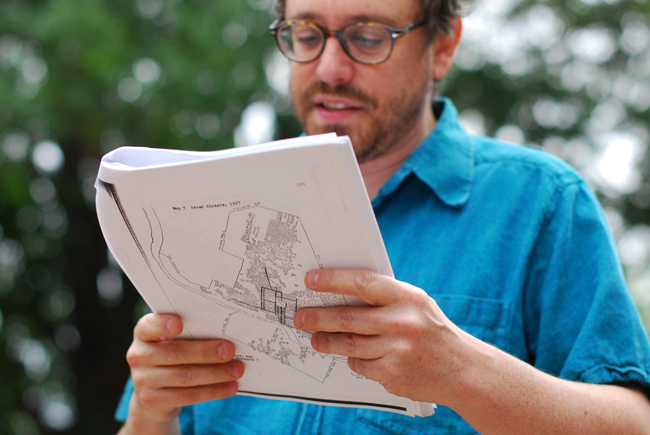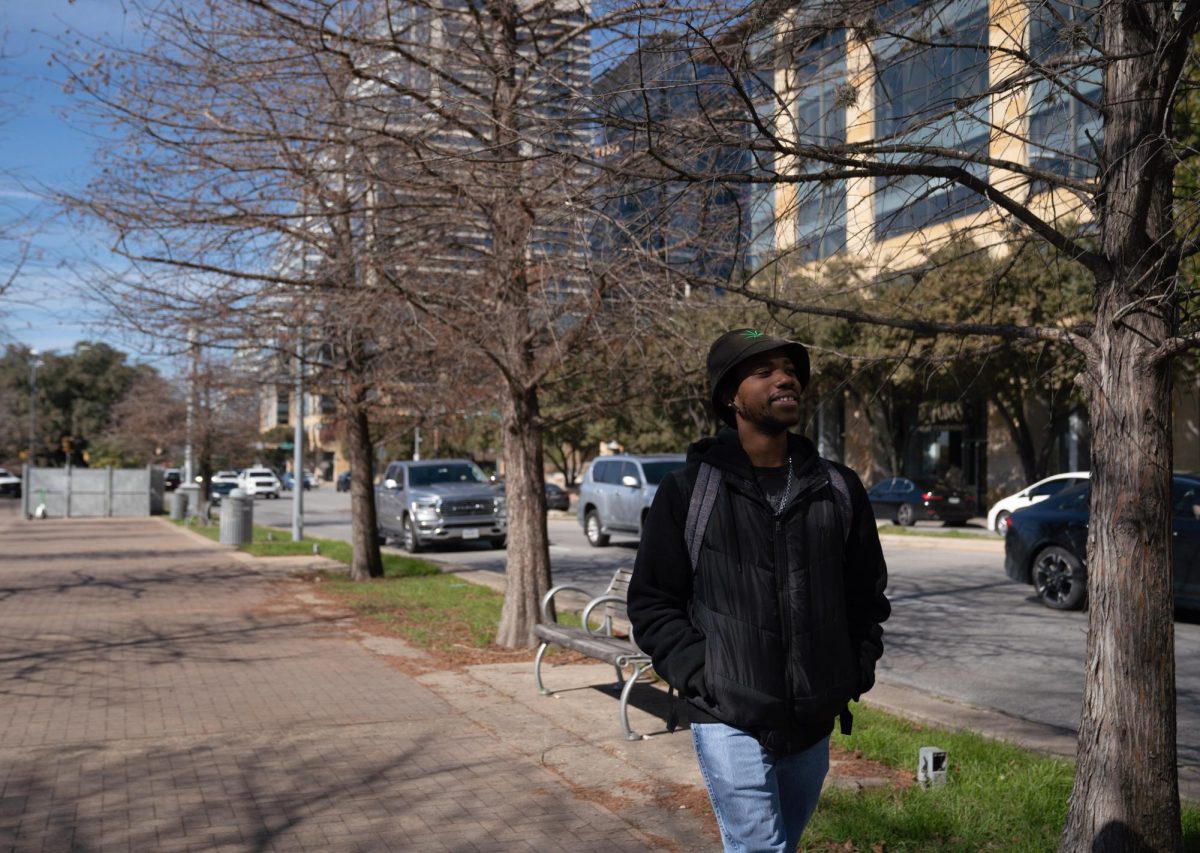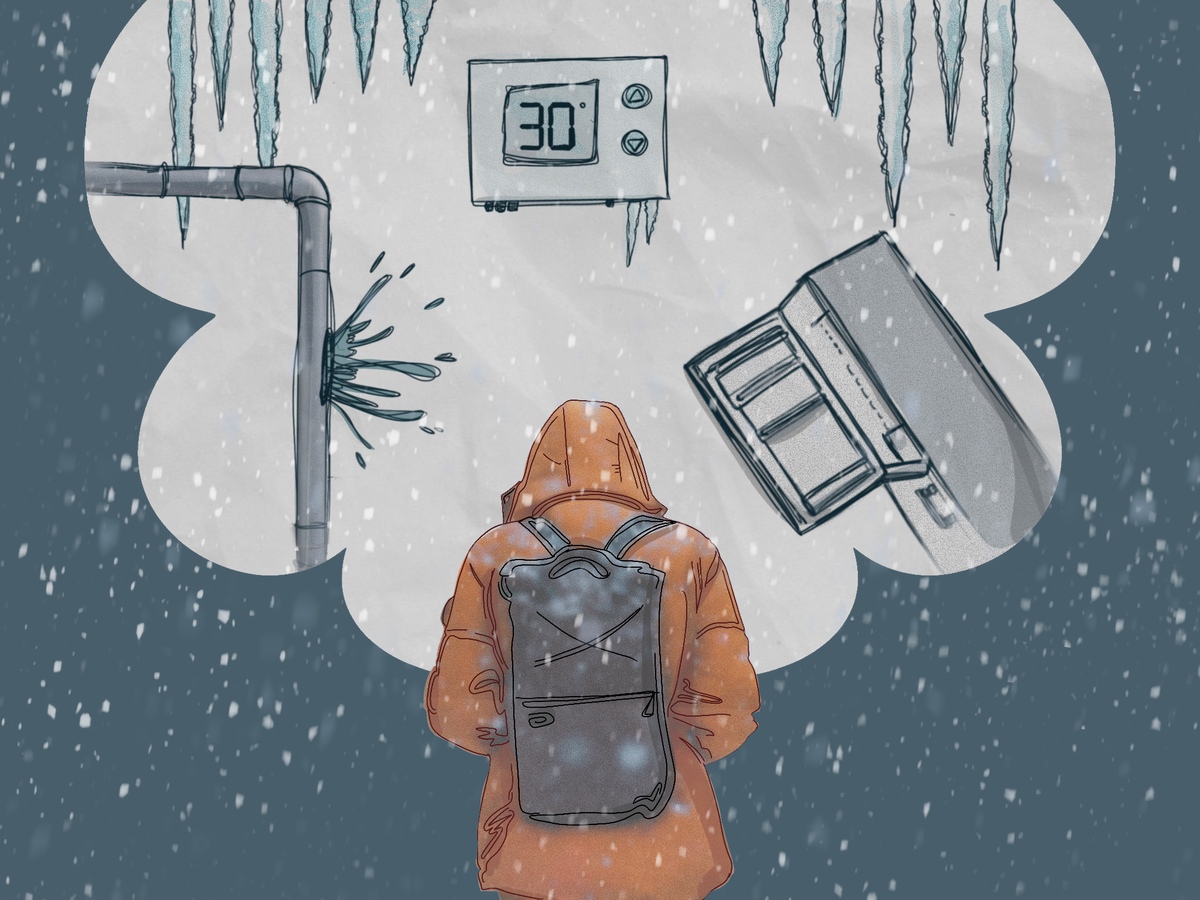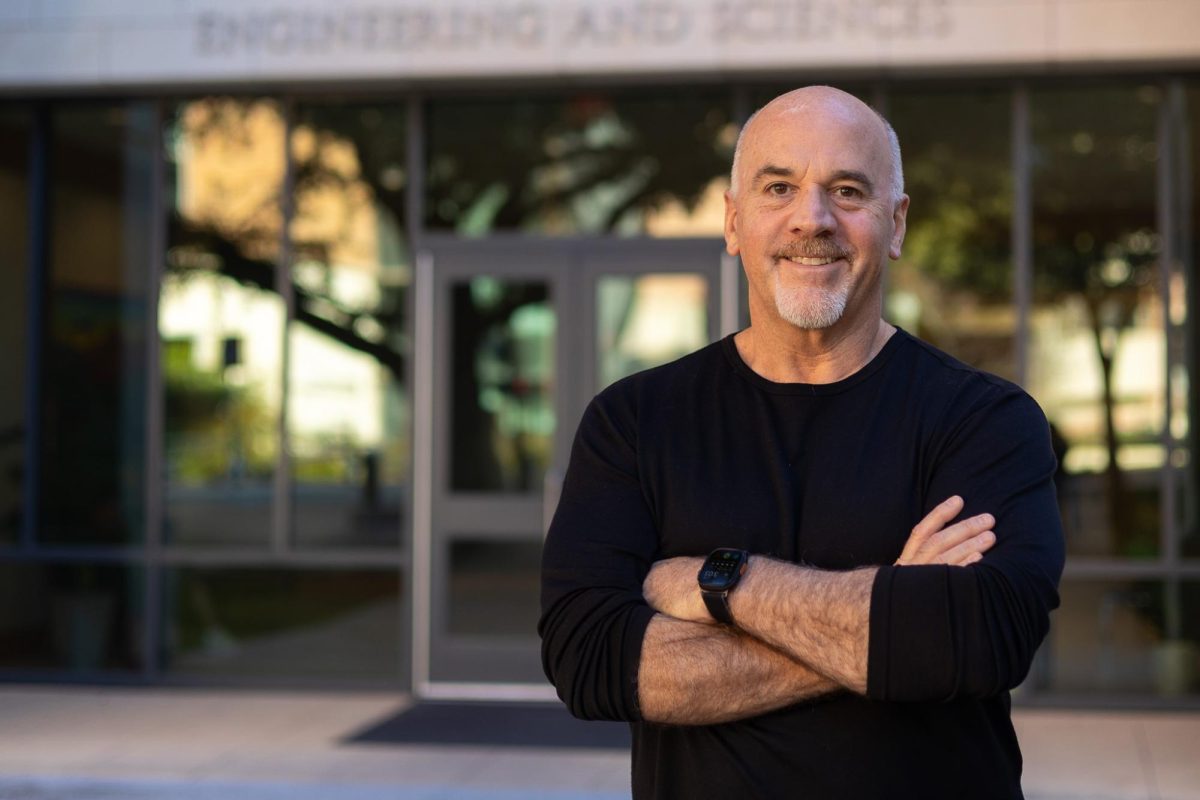Segregation within schools in early East Austin affected the way the community developed into what it is today, Eliot Tretter, a geography and urban studies lecturer, said at a tour yesterday.
Pouring rain did not stop the Jane Jacobs East Austin Walk and Talk tour Sunday morning. About 20 members of the Austin community, ranging from UT students to preservationists, came to Metz Elementary School to learn about the history of East Austin residents and urban planning.
Tretter guided tour participants through residential areas of East Austin and pointed out changes since the 1920s and 1930s. Tretter also gave a history of the racial issues of the area, ranging from segregation to the attempts made to better integrate black and white citizens.
“I want this tour to provide people with a better understanding of East Austin,” Tretter said. “What people don’t realize when they see this part of town is that it has a particular history, which is not always pretty.”
Tretter said schools were often divided to separate the Spanish-speaking students and the ‘traditional’ white students, and this caused further racial divisions within the community.
On one stretch of the tour, Tretter led participants to a street where all the houses were built by different companies. These companies built the houses with different floor plans for different races, Tretter said.
The tour was inspired by the works of Jane Jacobs, an American-Canadian preservationist who was especially interested in cities and urban areas, and was put on by the Student Historic Preservation Association at UT and Mid Tex Mod.
“Jane Jacobs was all about engaging neighbors and communities, so we want to use that as inspiration for our projects,” said Jenni Minner, a UT graduate student and the project manager for the Austin Historical Survey Wiki, a project to document different sections of Austin and how they have changed throughout history.
Students from the Sociocultural Influence on Learning class attended the tour in order to understand how different environments affects the way children learn, Britt Plotsky, elementary education and Asian culture and languages
sophomore, said.
“I was definitely raised differently, so it was interesting to go through the communities and experience how the kids live outside the classroom,” Plotsky said.





















